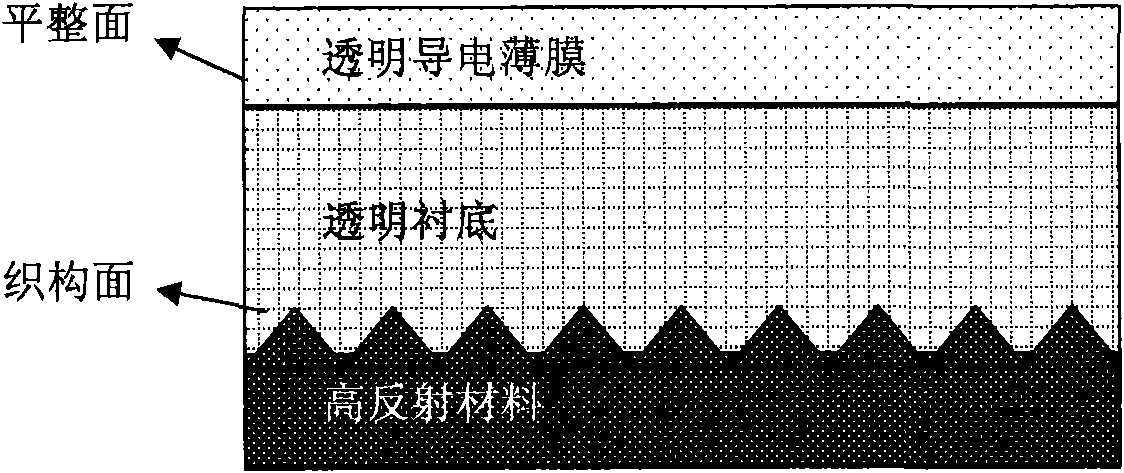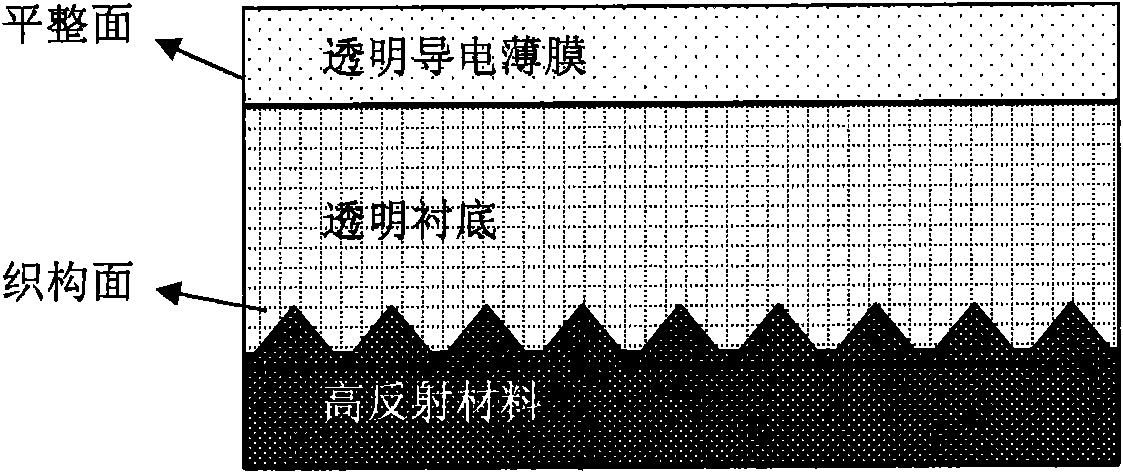Photo-electro separated solar cell back reflector
A solar cell and photoelectric separation technology, which is applied in photovoltaic power generation, circuits, electrical components, etc., can solve the problems of impact, light-trapping film microstructure, etc., and achieve the effects of improving light absorption, good electrical performance, and low cost
- Summary
- Abstract
- Description
- Claims
- Application Information
AI Technical Summary
Problems solved by technology
Method used
Image
Examples
Embodiment Construction
[0016] In order to make the object, technical solution and advantages of the present invention clearer, the present invention will be described in further detail below in conjunction with specific embodiments and with reference to the accompanying drawings.
[0017] The solar cell back reflector with photoelectric separation provided by the invention is composed of a transparent conductive film, a transparent substrate and a high reflection material. The working principle of the back reflector: the light that is not absorbed by the absorbing layer passes through the transparent conductive film and the transparent substrate and is reflected by the highly reflective material, so that the light returns to the absorbing layer to be absorbed again, and the photogenerated carriers generated by the absorbing layer are respectively absorbed The front electrode and the transparent conductive film collect the light, while the light trapping is mainly realized by the highly reflective mat...
PUM
 Login to view more
Login to view more Abstract
Description
Claims
Application Information
 Login to view more
Login to view more - R&D Engineer
- R&D Manager
- IP Professional
- Industry Leading Data Capabilities
- Powerful AI technology
- Patent DNA Extraction
Browse by: Latest US Patents, China's latest patents, Technical Efficacy Thesaurus, Application Domain, Technology Topic.
© 2024 PatSnap. All rights reserved.Legal|Privacy policy|Modern Slavery Act Transparency Statement|Sitemap



